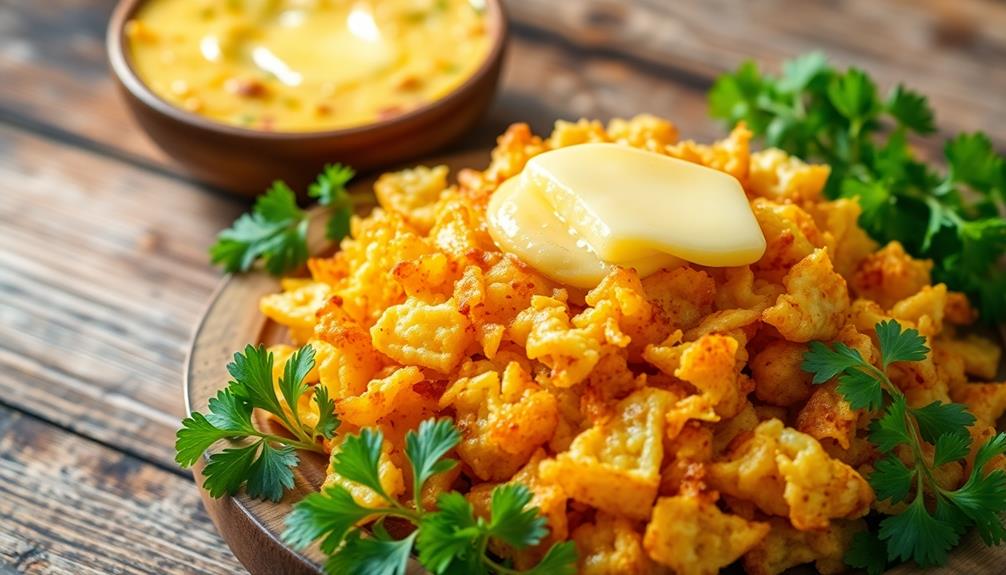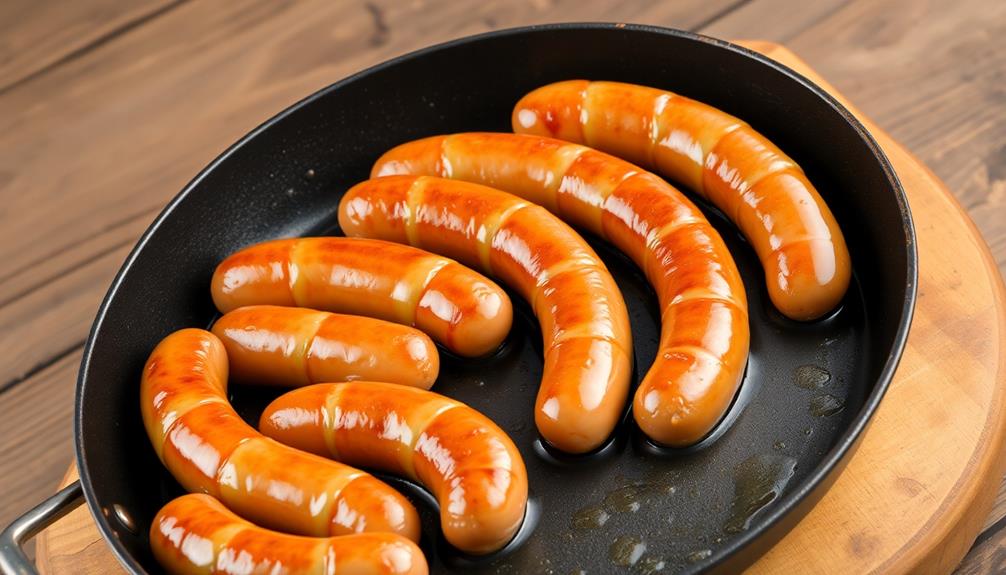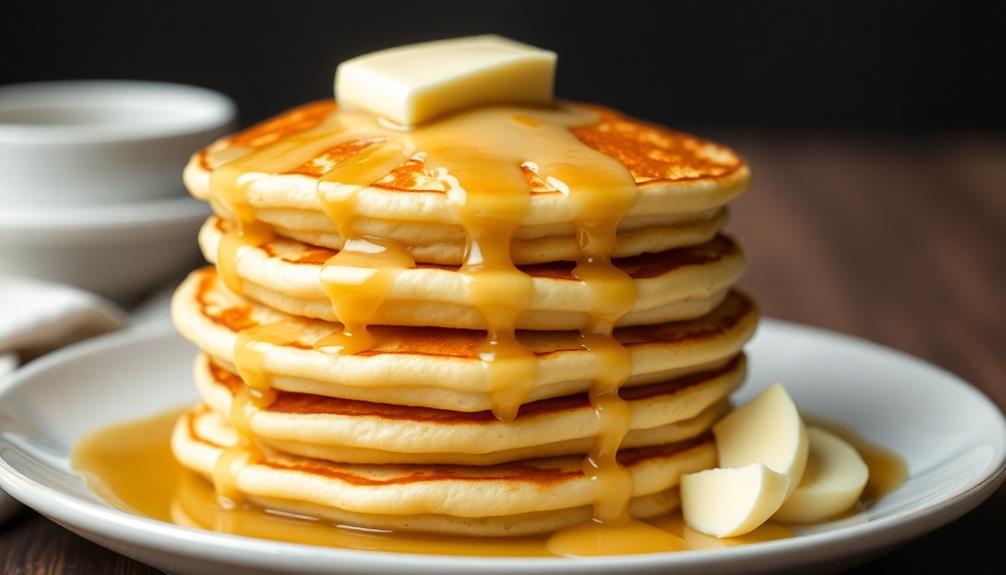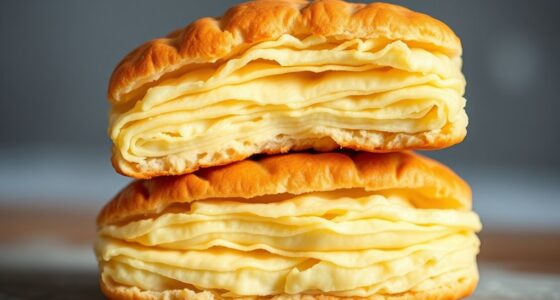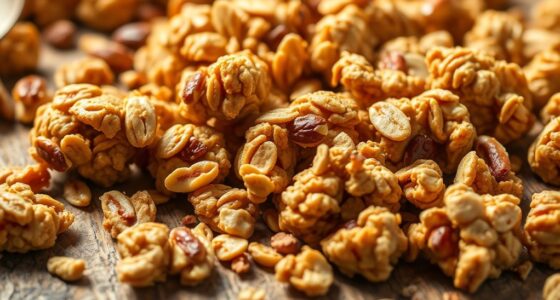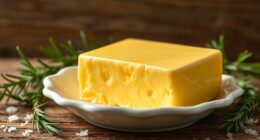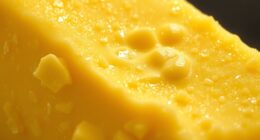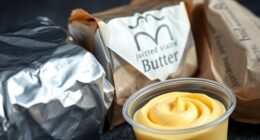Butter-fried hash browns are a breakfast delight that'll have your taste buds dancing with joy. These crispy, golden-brown beauties start with fluffy, grated russet potatoes that you'll fry to perfection in a blend of butter and oil. The key is coaxing out that irresistible crispiness by working in batches and letting the potatoes sizzle until they reach a gorgeous, caramelized finish. Serve these hash browns alongside your favorite breakfast items, or enjoy them on their own – either way, you're in for a real treat. And if you're eager to discover even more ways to elevate this classic breakfast staple, keep reading!
Key Takeaways
- Russet potatoes are the ideal choice for their high starch content and ability to achieve a crispy texture when fried in butter.
- Proper shredding technique and removing excess moisture from the potato strips are essential for achieving a golden-brown, crunchy hash brown.
- Cooking the hash browns in a combination of butter and vegetable oil provides a rich, flavorful crust while ensuring even cooking.
- Frying the hash browns in batches and flipping them regularly ensures uniform browning and prevents overcrowding, resulting in a crispy, irresistible finish.
- Customizing hash browns with additional ingredients like onions, peppers, or cheese can enhance the flavor and make them a versatile breakfast or side dish.
History
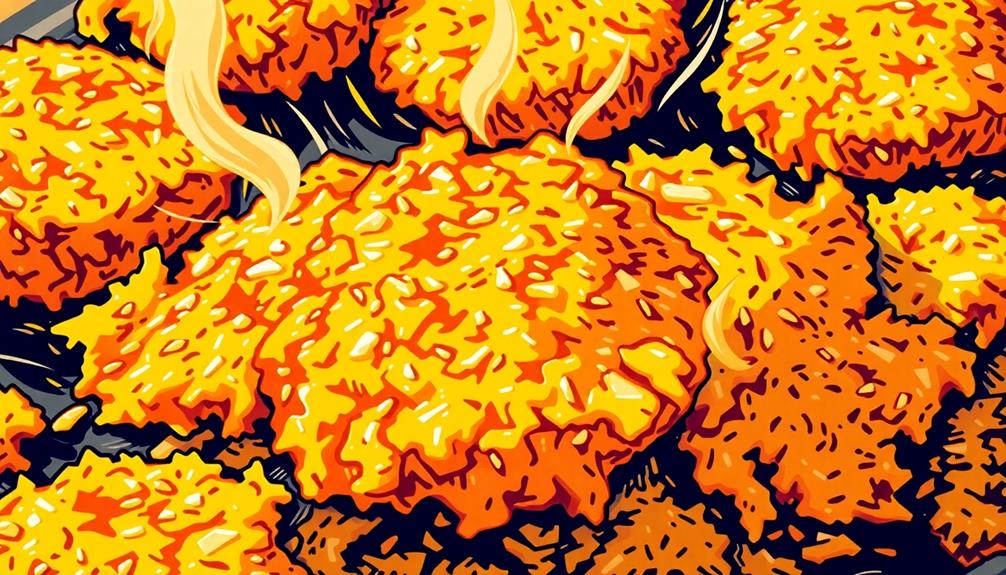
The origins of hash browns can be traced back to the late 19th century, when European immigrants brought their traditional potato dishes to the United States.
These simple yet delicious fried potatoes quickly gained popularity, becoming a staple on American breakfast menus.
As the story goes, hash browns were first served in New York City, where savvy chefs experimented with different cooking methods to create the perfect crispy, golden-brown texture.
Some added onions or peppers for extra flavor, while others perfected the art of shredding the potatoes to achieve that iconic hash-like appearance.
Over the decades, hash browns have evolved, adapting to regional tastes and personal preferences.
Today, you can find them served in diners, restaurants, and even fast-food chains across the country, each version with its own unique twist.
Whether you like them simple and classic or loaded with toppings, hash browns remain a beloved breakfast staple that never fails to satisfy.
Recipe
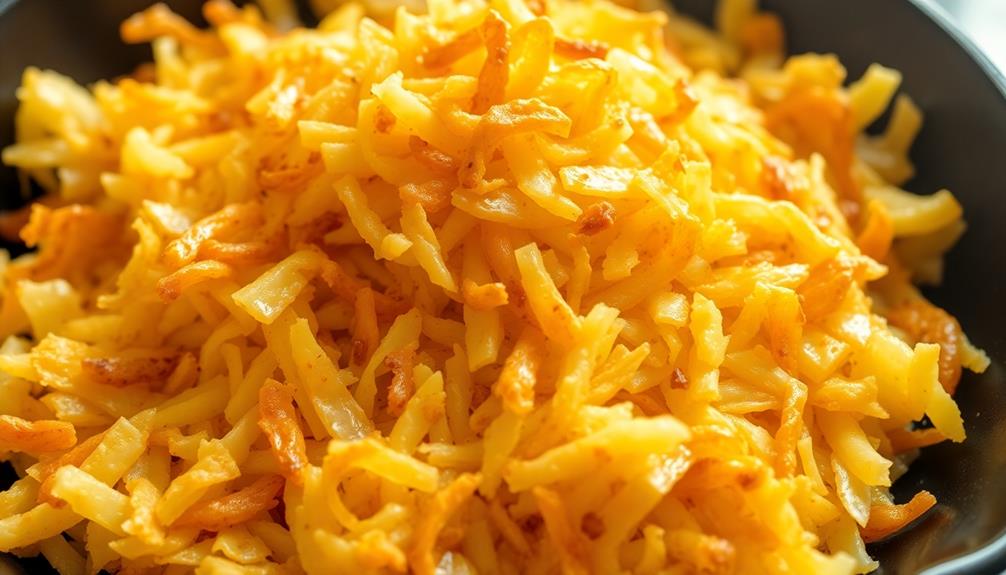
Hash browns are a classic breakfast dish that can be enjoyed any time of day. They're crispy on the outside and tender on the inside, making them a delicious and satisfying accompaniment to eggs, bacon, or simply on their own. Creating the perfect hash browns requires just a few simple ingredients and a bit of technique.
The key to achieving the perfect hash brown is to use the right potatoes and to properly prepare them. Russet potatoes are the ideal choice, as they've a high starch content that helps them get crispy when cooked. It's also important to grate or shred the potatoes, rather than dicing them, to ensure even cooking and a crisp texture.
Ingredients:
- 3 large russet potatoes, peeled and grated or shredded
- 1/4 cup all-purpose flour
- 1 teaspoon salt
- 1/4 teaspoon black pepper
- 2 tablespoons unsalted butter
- 2 tablespoons vegetable oil
Instructions:
Place the grated or shredded potatoes in a clean kitchen towel or cheesecloth and squeeze out as much moisture as possible. Transfer the potatoes to a bowl and mix in the flour, salt, and pepper until well combined.
Heat the butter and vegetable oil in a large skillet over medium-high heat. Scoop heaping 1/4 cup portions of the potato mixture into the hot oil, flattening them slightly with a spatula. Cook for 3-4 minutes per side, or until golden brown and crispy.
Tips:
It's important to work in batches to avoid overcrowding the skillet, which can make the hash browns steam rather than fry. Additionally, be sure to let the oil heat up properly before adding the potato mixture to ensure a crisp and evenly browned exterior.
For an extra crispy texture, you can also try rinsing the grated potatoes in cold water and then patting them dry before cooking.
Cooking Steps
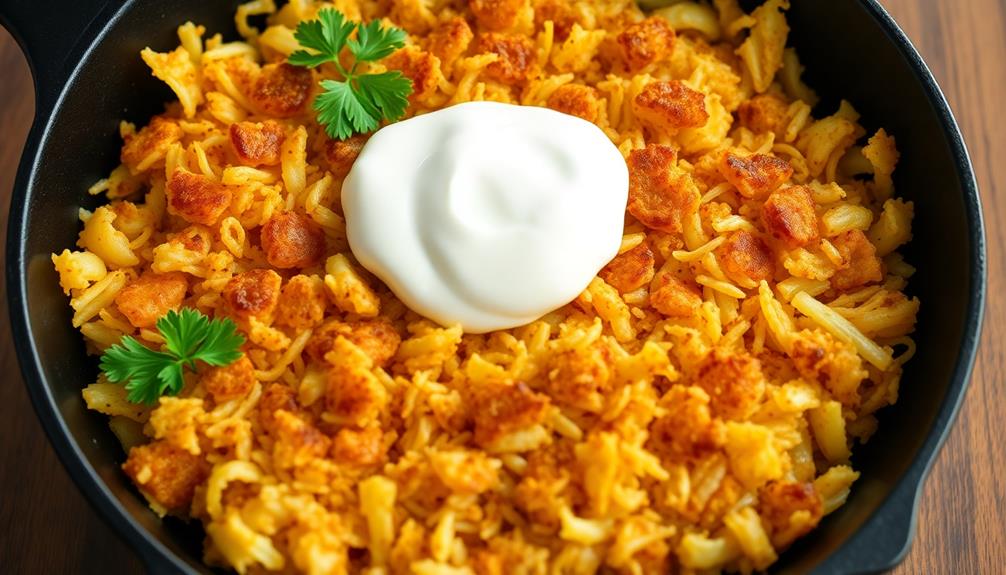
Shredding potatoes into thin strips is the first step to crispy, golden-brown hash browns.
After soaking the potato strips in cold water, be sure to drain and thoroughly pat them dry. Proper preparation ensures that moisture is minimized, which is crucial for achieving that perfect crispiness.
Now, heat up some butter in a skillet and fry those potato strips until they're a delightful crispy brown.
Proper diet for hamsters can also impact the texture of their food!
Step 1. Shred Potatoes Into Thin Strips
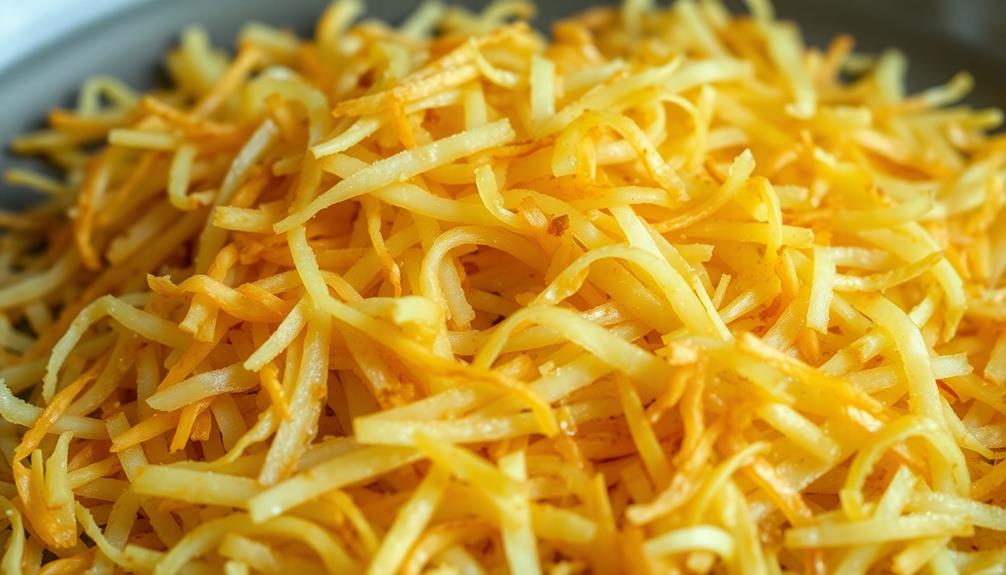
Grated potato strips are the foundation of crisp hash browns. You'll want to use starchy, firm potatoes like Russets for the best texture, as they create a tender interior while allowing for a crispy exterior.
Grab a box grater or food processor with a shredding disc, then get to work. Peel the potatoes if desired, then run them across the large holes of the grater. The thin, uniform strips are key – they'll crisp up beautifully when cooked. Don't stop until you've grated all your potatoes. Be careful of your fingers, using the grater's holder if needed.
Once grated, gather the potato strands into a clean kitchen towel or cheesecloth. Twist and squeeze to remove as much excess moisture as possible, as this step is crucial for achieving that perfect crunch.
For added flavor and richness, consider incorporating some herb-infused butter into your cooking process, as butter enhances flavor in many culinary creations.
With your potato shreds ready, you're well on your way to hash brown perfection. Just a few more steps to go before you can dive into a plate of hot, golden hash browns.
Step 2. Soak Potato Strips in Cold Water
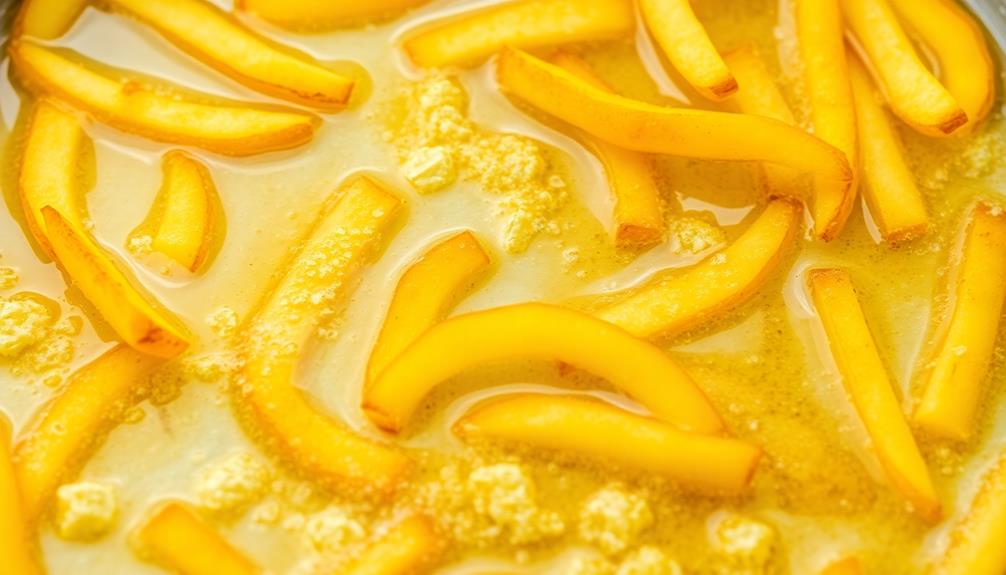
After you've grated the potatoes, the next crucial step is to soak the potato strips in cold water. This simple action serves a vital purpose – it helps to remove excess starch from the potatoes, ensuring your hash browns turn out crispy and golden, not soggy or gummy.
Submerge the shredded potato strips in a bowl of ice-cold water and let them sit for at least 30 minutes, stirring occasionally. You'll notice the water becoming cloudy as the starch is drawn out of the potatoes.
Drain the potatoes thoroughly, then pat them dry with paper towels or a clean kitchen towel. Getting rid of that excess moisture is key to achieving the perfect hash brown texture.
Once your potato strips are nice and dry, you're ready to start cooking! The cold water soak is an easy but essential step that will take your homemade hash browns to the next level of crispy, delicious perfection.
Step 3. Drain and Pat Dry Potato Strips
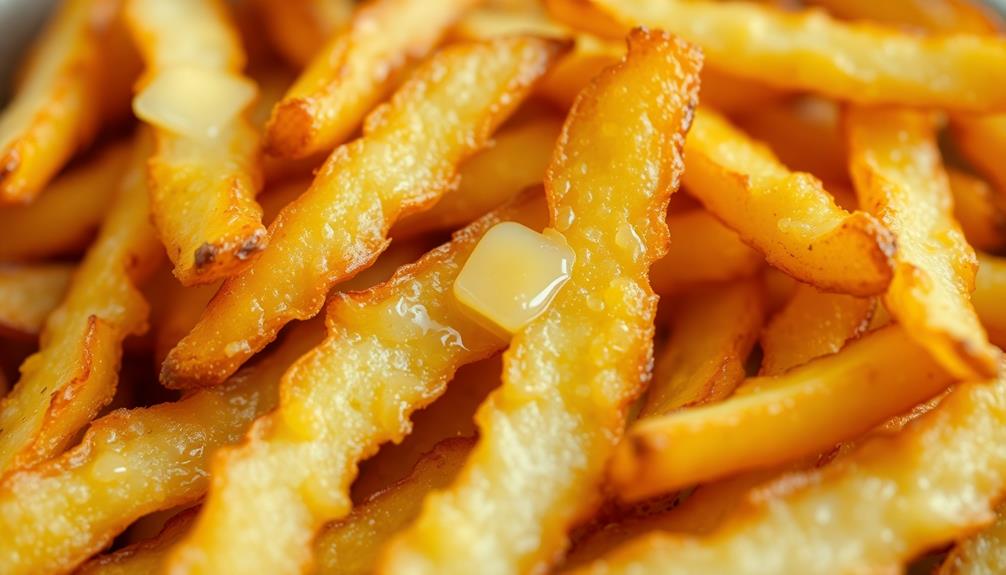
With the potatoes now soaked and the excess starch removed, it's time to prepare them for cooking.
Grab a clean kitchen towel or paper towels and lay the potato strips on top. Gently press down to absorb any remaining moisture. You want the potatoes to be as dry as possible before they hit the hot oil. This will help them crisp up beautifully.
Don't worry about being too rough – you want to make sure every inch of those shredded spuds is thoroughly patted dry. Once they're good and dry, you're ready to start frying.
The key to super crispy hash browns is getting that exterior nice and dry before cooking.
With your potato strips all prepped, you can now move on to the next step: heating up that skillet and getting ready to fry up some irresistible, golden-brown hash browns.
Step 4. Heat Butter in Skillet

Fire up your skillet over medium-high heat and add a generous knob of butter. As the skillet heats up, the butter will start to sizzle and foam.
Keep a close eye on it, swirling the pan occasionally, until the butter turns a rich, golden brown color. This nutty, fragrant butter is the perfect foundation for your crispy hash browns.
Now, it's time to add your drained and patted-dry potato strips to the hot, buttery skillet. Spread them out in an even layer, making sure not to overcrowd the pan.
You want each potato strip to have plenty of room to get nice and crispy. Let them sizzle undisturbed for a minute or two, then use a spatula to flip and rotate the hash browns, ensuring even browning on all sides.
As the potatoes cook, you'll hear that satisfying crackle and see them transform into a beautiful golden-brown crust.
Keep flipping and stirring until they reach your desired level of crispiness, about 5-7 minutes total.
Step 5. Fry Potato Strips Until Golden Brown

Once the butter is perfectly browned, it's time to add your drained and pat-dried potato strips to the hot, buttery skillet. Sizzle them up, stirring occasionally, until they turn a gorgeous golden brown, about 5-7 minutes.
You'll know they're done when the edges become crispy and the centers are tender. The key is to avoid overcrowding the pan – you want the potato strips to have plenty of room to get nice and crispy.
As they cook, you'll start to smell the incredible aroma of fried potatoes, making your mouth water in anticipation. Keep a close eye on them, adjusting the heat as needed, to ensure they don't burn.
Once they reach that perfect golden-brown color, transfer the crispy hash browns to a paper towel-lined plate to drain any excess grease.
Get ready to enjoy the perfect blend of crispy edges and fluffy centers in every bite!
Final Thoughts
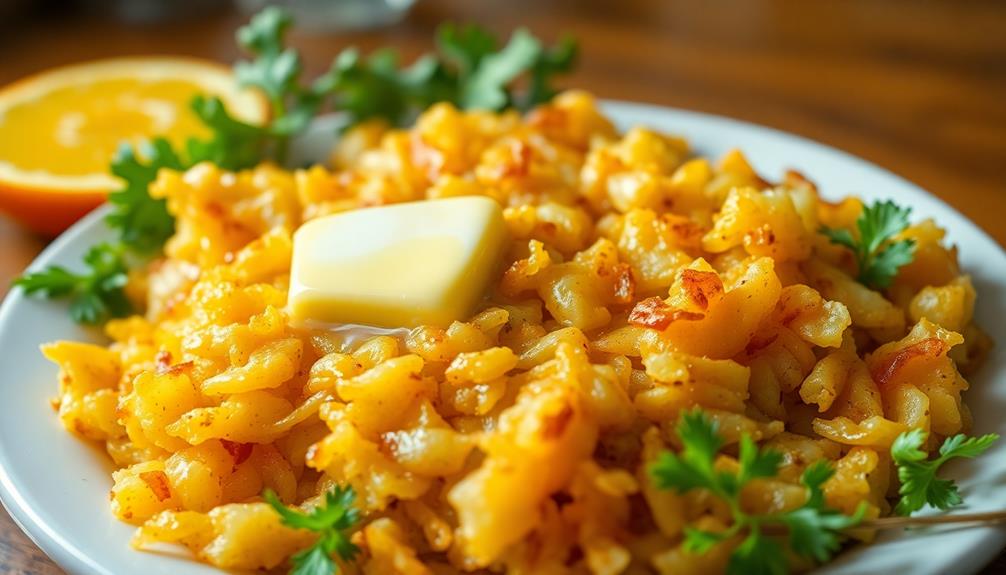
Ultimately, hash browns are a delicious and versatile breakfast staple that can be enjoyed in countless ways.
Whether you prefer them crispy and golden-brown or soft and tender, these shredded potato bites are a true delight. The keys to making perfect hash browns are to use the right potatoes, properly shred them, and cook them in just the right amount of butter or oil.
Once you've mastered the basics, the possibilities are endless. Try adding in diced onions, bell peppers, or even shredded cheese for a flavor twist.
You can also experiment with different seasonings, like paprika, garlic powder, or a sprinkle of fresh herbs. And don't forget the joy of pairing hash browns with your favorite breakfast dishes, from fluffy scrambled eggs to savory sausage and bacon.
No matter how you enjoy them, hash browns are sure to become a staple in your breakfast rotation.
Frequently Asked Questions
What Type of Potatoes Work Best for Hash Browns?
For the best hash browns, you'll want to use starchy potatoes like russets or Yukon golds. Their high starch content helps them crisp up beautifully when fried, giving you that iconic golden-brown hash brown texture.
Can I Use Frozen Hash Browns Instead of Fresh?
You certainly can use frozen hash browns instead of fresh! Frozen hash browns are a convenient option that can still produce crispy, golden results when cooked properly. Just be sure to follow the package instructions for best results.
How Do I Prevent the Hash Browns From Getting Soggy?
To prevent soggy hash browns, thoroughly pat the frozen cubes dry before cooking. Fry them in small batches over high heat, flipping occasionally, to ensure each piece crisps up nicely. Avoid overcrowding the pan for best results.
Can I Make Hash Browns Ahead of Time and Reheat Them?
You can make hash browns ahead of time, but reheating them can be tricky. They may become soggy if not done properly. For best results, reheat them in a skillet with a little oil or butter to crisp them up again.
Is It Necessary to Squeeze Out Excess Moisture From the Potatoes?
Squeezing out excess moisture from the potatoes is recommended to achieve crispy hash browns. This removes any excess water that could cause the potatoes to steam rather than fry, resulting in a soggy texture.
